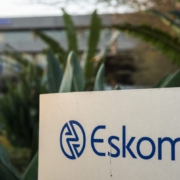Eskom, the South African economy’s inflection point
For the first time in more than a decade, South Africans may be entering summer without the fear of load shedding hanging over every family dinner, boardroom meeting, or production line. Earlier this month, Eskom said that it expects no load shedding between September 2025 and March 2026, contingent on keeping unplanned breakdowns under control. Last summer, we saw just 13 days of cuts vs. 176 days the year before: A remarkable turnaround for a utility long synonymous with crisis.
Why does this matter?
Electricity is the lifeblood of modern economies. When it falters, industries seize up, households lose faith, and investors take their money elsewhere. Eskom’s improved plant performance and more disciplined maintenance mean the question is no longer whether the lights will stay on but what a reliable grid could do for growth, jobs, and markets.
Manufacturing and mining are gearing up again
Few sectors suffered more from power cuts than manufacturing and mining. Outages throttled capacity, jammed export schedules, and forced costly diesel backups. The prospect of a stable summer allows plants to plan shifts and maintenance with confidence, thereby boosting throughput and safety in continuous-process operations. The latest Absa Purchasing Managers’ Index (PMI) for manufacturing slipped back below 50 in August (to 49.5 from 50.8), reflecting weak demand and trade headwinds. However, a dependable grid removes a chronic drag that companies could not control.
Small business and consumer confidence
The gains are not just for heavy industry. For salons, cafés, and township retailers, unpredictability meant either investing in inverters or losing sales. A stable grid frees up cash flow and mental bandwidth. Entrepreneurs consistently rank energy reliability among their top concerns; lifting that weight nudges hiring, retail spend, and the micro-innovations that compound into growth. For households, the benefit is equally real. Reliable supply reduces the need for costly generators or solar kits, easing pressure on already stretched budgets. If inflation expectations ease on lower energy costs, the South African Reserve Bank may eventually gain the needed room to trim interest rates, another lift for consumers and credit-sensitive sectors like housing and retail.
Markets: A credibility signal
International investors watch infrastructure reliability as a proxy for reform momentum. The rand firmed about 0.4% on Friday after stronger net foreign reserves (up from $65.143 billion in July to $65.899 billion in August), and the 2035 bond yield eased (small moves but the direction matters). Consistent energy supply strengthens the case for capital inflows, softens risk premia, and supports equity earnings where electricity once pinched margins.
Keep the scepticism (a little)
Scepticism is healthy. Eskom’s outlook is explicitly conditional: It hinges on keeping unplanned losses below stress thresholds and on continued discipline through maintenance cycles. Transmission and distribution weaknesses, municipal arrears, and residual governance risks have not vanished. One good season does not equal structural reform but it can be the platform for it.
Some other crosswinds
Even if electricity stabilises, other headwinds still have a bite. Business confidence slid to 39 in Quarter 3, below the long-term average, as firms contended with global volatility and new United States (US) trade barriers. Meanwhile, August’s PMI dip underscores soft orders at home and abroad. And in agriculture, US tariffs of 30% plus cheap sugar imports are a “double-whammy” for cane growers, threatening rural jobs and incomes. In short, electricity reliability helps but trade and demand shocks still frame 2025’s macro-story.
The bottom line: A real turning point – if we lock it in
South Africans are weary of false dawns. But if Eskom delivers a load-shedding-free summer, 2025 could mark the inflection point: Machines running, shifts working optimally, and confidence quietly rebuilding. That does not end our problems but it does remove the single biggest self-inflicted brake on growth. Keep the lights on, and the rest of the reform agenda suddenly has a fighting chance.
This article has been published on Moneyweb.





